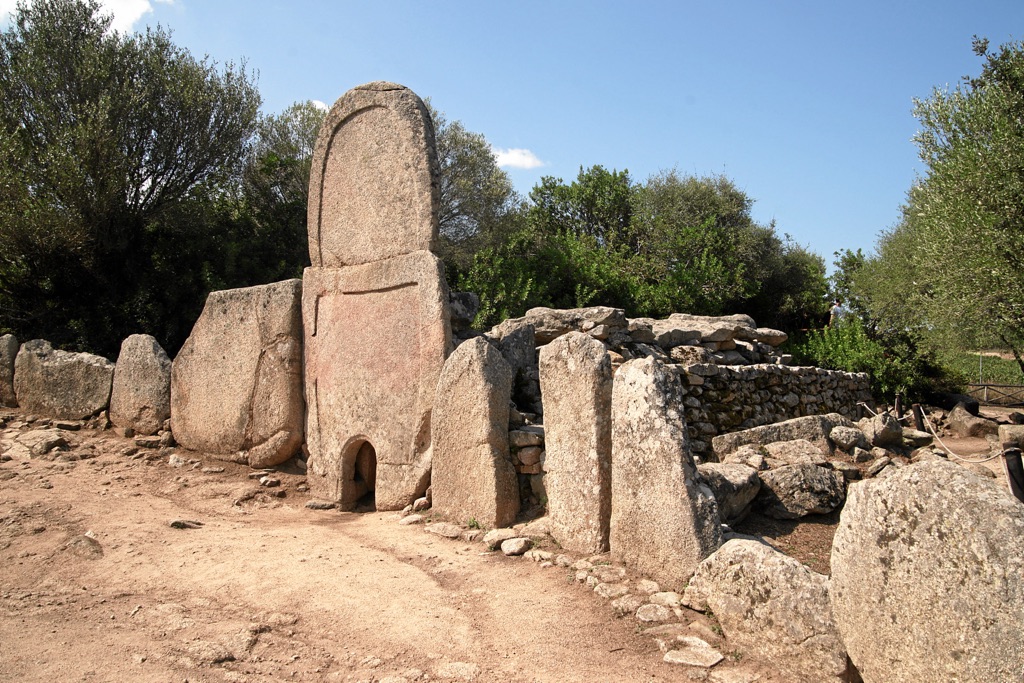The Giants’ grave at Arzachena is a captivating historical site with a majestic aura from Sardinia’s ancient past. This Bronze Age collective burial site, known locally as ‘Tomba dei Giganti,’ dates back to around 1800-1200 BC. The monument boasts a central gallery grave, which is flanked by rows of stones that create an imposing semi-circular facade reminiscent of a robust shield embracing the spirits of the past. In its prime, the grave held the collective memories and remains of a vibrant Nuragic civilization, carrying stories of their societal structures and death rituals. Visitors are drawn not only to the grave’s historical significance but also to the surrounding landscape’s serene beauty, where the whispers of ancestry can be heard on the winds that sweep the Sardinian countryside.
Funerary Structures
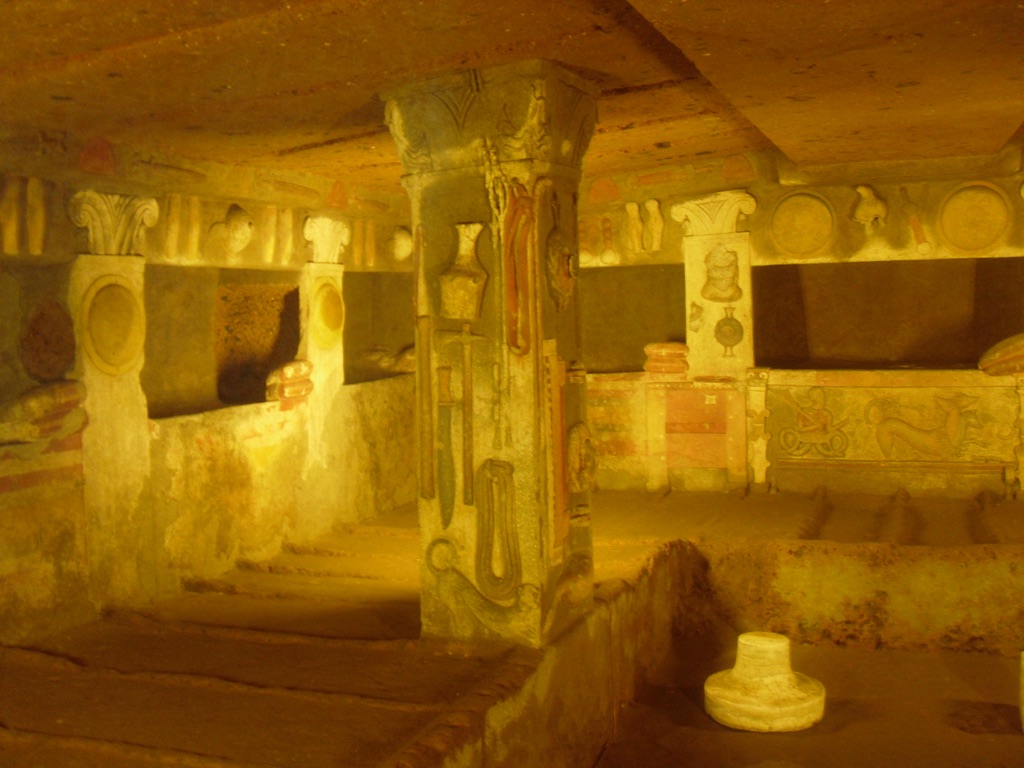
The Etruscan Tomb of the Reliefs
Embark on a journey back to ancient times with the Tomb of the Reliefs. This Etruscan wonder lies in the Banditaccia necropolis, near Cerveteri, Italy. It stands out with its detailed stucco reliefs. They vividly depict tools, weapons, and household items. The tomb, carved in the 4th century BC, gives us a peek into Etruscan daily life and afterlife beliefs. Scholars and tourists alike marvel at its remarkable preservation. On its walls, we can see depictions of a vibrant ancient society. It is a witness to the richness of Etruscan culture.
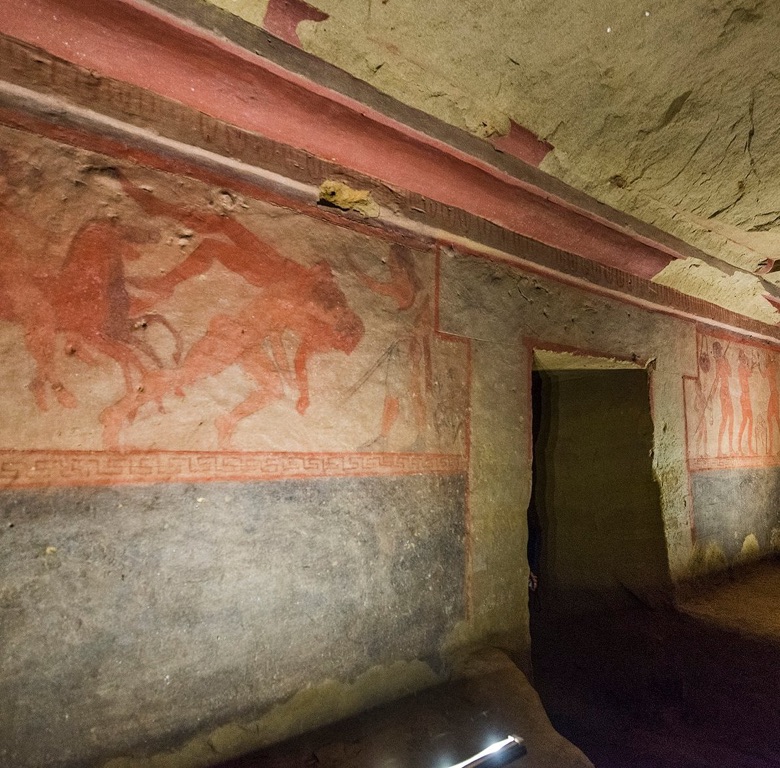
Tomba della Scimmia
The Tomba della Scimmia, or Tomb of the Monkey, holds a significant place in Etruscan history. Found in Chiusi, Italy, this ancient burial site captures attention with its intricate wall paintings and historical richness. The tomb is named after a fresco depicting a monkey, which is unique among Etruscan art. Visitors immerse themselves in a mysterious past where the Etruscans practiced elaborate burial rituals. Though these customs are long gone, they continue to fascinate historians and tourists alike.
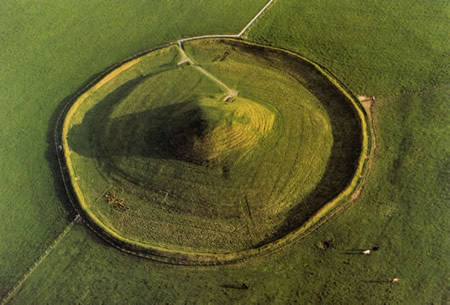
Maeshowe Chambered Cairn
Maeshowe Chambered Cairn stands as one of the most remarkable Neolithic monuments in Europe. It lies in the heartland of Neolithic Orkney, a UNESCO World Heritage site known for its well-preserved ancient sites. The structure boasts a sophisticated example of prehistoric architecture. Visitors often marvel at the large stones forming its entrance passageway, leading to a central chamber. Here, they find standing stones that have withstood the test of time.
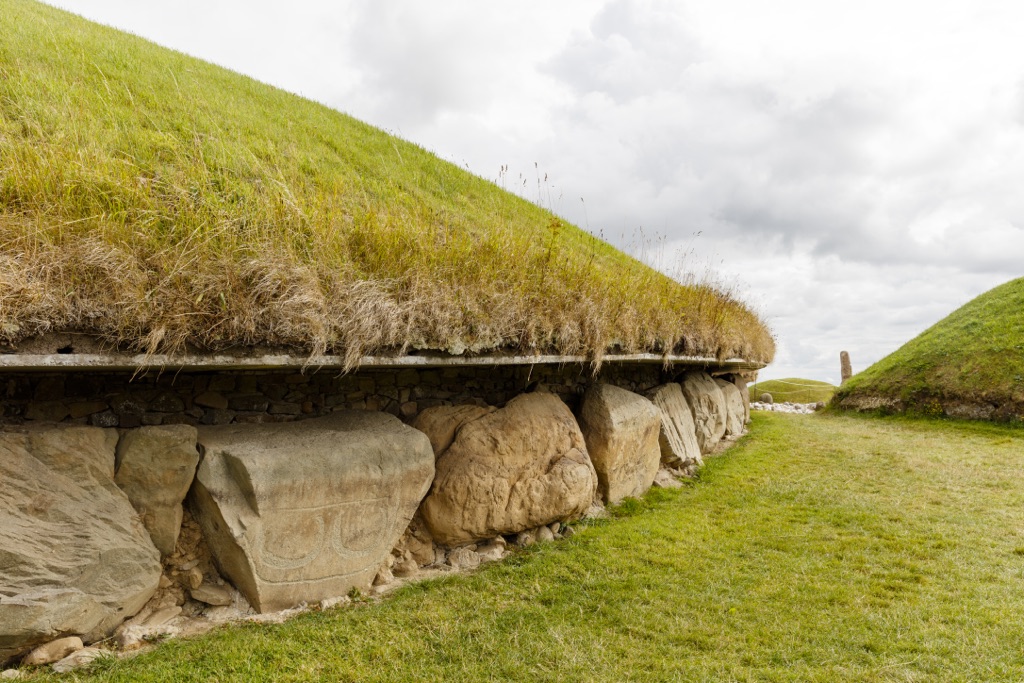
Knowth Passage Tomb
Nestled in the lush Boyne Valley, Knowth Passage Tomb stands as a testament to ancient engineering. This Neolithic marvel is older than Stonehenge, dating back to around 3200 BC. Intricate carvings mark its large kerbstones, hinting at a complex spiritual significance. Knowth is not just a single tomb, but a cluster of tombs. It’s part of the Brú na Bóinne complex, a UNESCO World Heritage site. Its main tomb consists of a long passage leading to a central chamber. This site captivates visitors with its historic grandeur and mysterious past.

Dowth Passage Tomb
The Dowth Passage Tomb is a historic jewel nestled in the Boyne Valley, Ireland. It stands as one of the trio of renowned Neolithic monuments, alongside Newgrange and Knowth. This ancient site, believed to be around 5,000 years old, is lesser-known but holds its own unique charm and mystery. The passage tomb signifies an extraordinary union of human endeavor and celestial alignment. Its creators carefully designed it to capture the winter solstice sunset, illuminating the inner chamber with a warm glow. Dowth not only serves as a burial site but also as a testament to the advanced understanding of astronomy and engineering possessed by the ancient societies of Ireland.

